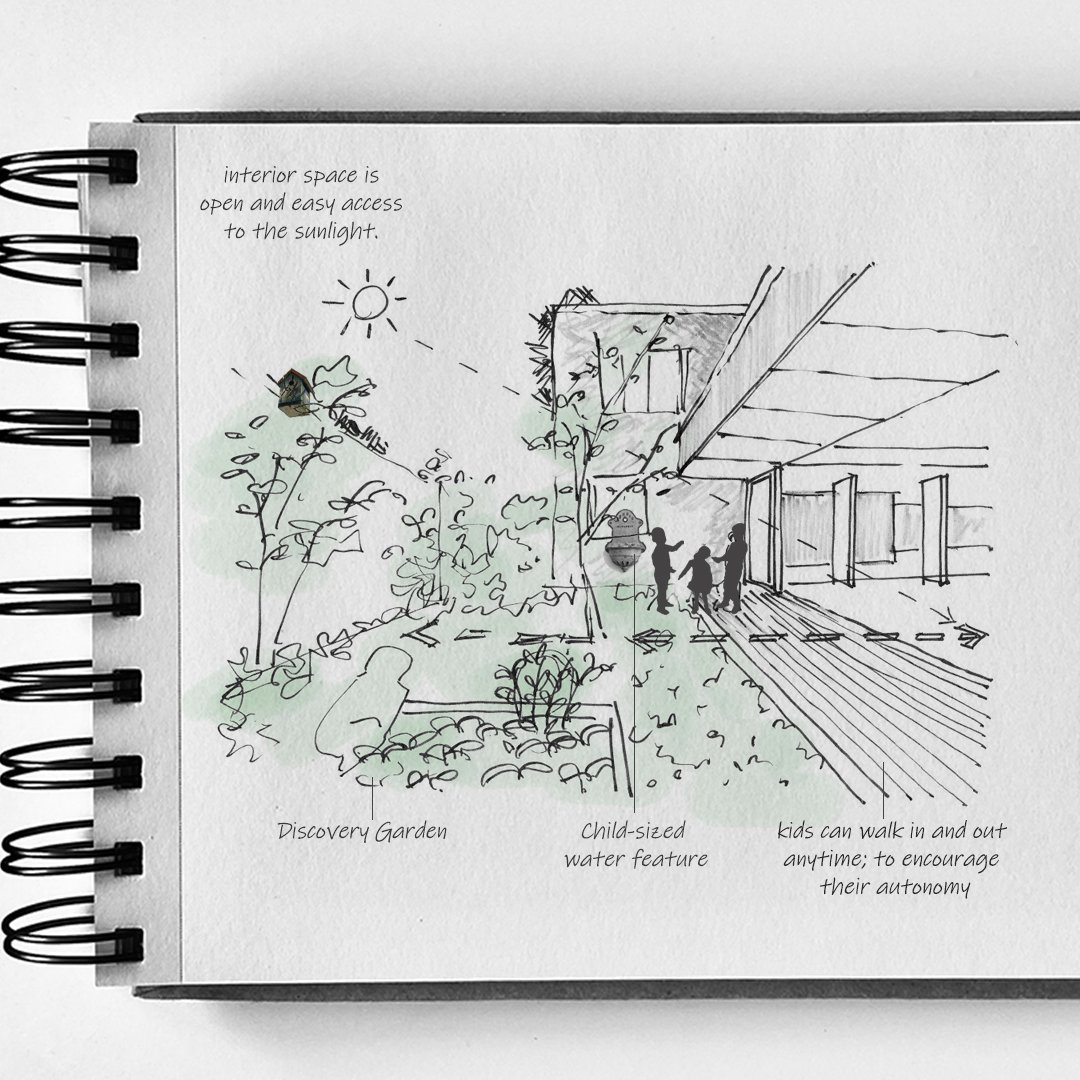What is a Child Care Center?
A childcare program typically serves preschool-aged children from six months to 6 years old. According to Childcare.gov, the age group in daycare centers are divided into four different groups:
Infant (less than 12 months)
Young toddler (1-2 years old)
Older toddler (2-3 years old)
Preschooler (3-5 years old)
Generally, a childcare center provides care and supervision for more than five children between the age of two and six for less than 24 hours a day. See the chart below for an overall picture of identifying a project’s user group.
Why Child Care Program matters in our neighborhoods?
According to this survey, 27%of families who have difficulty accessing childcare cannot find an open childcare slot. Because many childcare facilities are usually located in commercial buildings or zones, the care centers with more kids can easily divide similar-aged children into a proper learning environment and classrooms.
Americans with children spend at least 10% of their household income on childcare. Many licensed care centers only accept kids older than two years old. Families with children below age two often have to hire a nanny or let one partner stay home with their young toddlers.
Seven out of ten American children under six participate in some form of care outside their home. Many spend up to 12,500 hours of their waking hours in these environments before entering the public school system. Thus, inserting the right amount of childcare program with quality care in our neighborhood is essential for a family-oriented community.
An outdoor area as an extension of a classroom
"There must be provision for the child to have contact with nature; to understand and appreciate the order, the harmony and the beauty in nature." -- Maria Montessori
For kids younger than preschool age, an outdoor learning/playing area that meets their cognitive development needs is necessary. As children become more aware of nature, they are better equipped to understand the needs of the surrounding world and build on their classroom knowledge through sensory experiences.
How to make one?
Integrate childcare within walking distance
As mentioned above, if a childcare provider has five or less than five children receiving care are classified as part of the primary user group. It is essential to place child care programs in neighborhoods within walking distance of where parents are. One key integration is providing a quality outdoor playing/learning environment as part of the building's landscape.
Understanding childcare use group and their allowed zone can help us creatively popularize these Childcare "nodes" in our towns to make them convenient for those working parents. Doing so will also help us plan these landscape buffers between zones in an early phase and make the outdoor area more suitable for children.
The image illustrated an example of a Childcare program located in a townhouse (a residential zone). The program provider can take the kids to the nearby park without circling through vehicular traffic. Kids will also have more area to run and play without feeling confined within a small indoor space.
This setting is also beneficial during the pandemic/endemic situation. Maintaining a small group of children within one provider could effectively prevent the virus from spreading.
The image illustrate an example of a Childcare program placed on a ground floor of an office building. This location is convenient for parents who live in a nearby neighborhood, work in a nearby grocer, or even within the same office building. Since the program is already in a mixed-use zone, there is no restriction on how many children the program can admit. (Use the Montgomery ordinance as an example, children's daycare facility is considered "Civil and Institutional" land use. If the program has less than 30 people, including adults and children, the program can be allowed in all commercial/residential, employment, and industrial zones.)
Blend activities with landscape characters
A planner should integrate children's outdoor space to the greatest extent possible in the neighborhood. The area will serve these various age groups (infants/ toddlers/preschool) and area should divided by the activity types and landscape characters. It is also vital to ensure blind-sight corners, and the adults can watch everyone while maintaining a visual tie among groups.
Plan at the early stage as part of the site’s landscape
While many programs have not been fully developed or decided at the beginning of a project planning phase, an outdoor landscape for children that integrate with building users and neighborhood life can still be designed and thought out. Many building types could have this cognitive-developing outdoor space alongside their primary programs, such as a place of worship, an office, a hospital, a library, apartments, or senior housing.
A little throwback On Urban History - a School-centered neighborhood
In the 1900s, schools and an environment for children gradually became a core element in neighborhood planning.
In 1902, Ebenezer Howard re-proposed "Garden Cities of To-Morrow," a self-contained new town-country magnet. In his vision, any thriving town center should be where people want to go, and they have everything they need in the town itself.
In Clarence Perry's "the Neighborhood Unit" plan, he continued this self-efficient concept. One of his core principles of designing a neighborhood unit was to "Centre the school in the neighborhood so that a child's walk to school was only about one-quarter of a mile and no more than one-half mile."
Later in the New Urbanism movement, "a playground in each quadrant" and "a school to be shared with neighborhoods" became influential guidelines in neighborhood planning.








